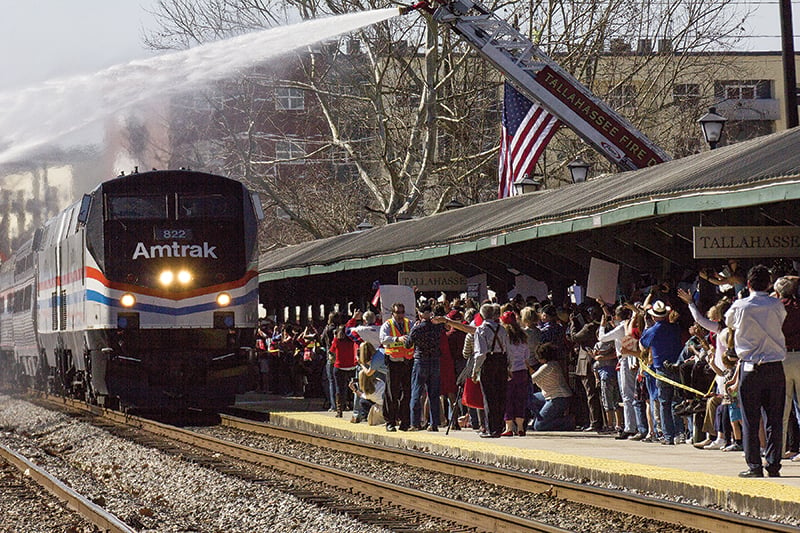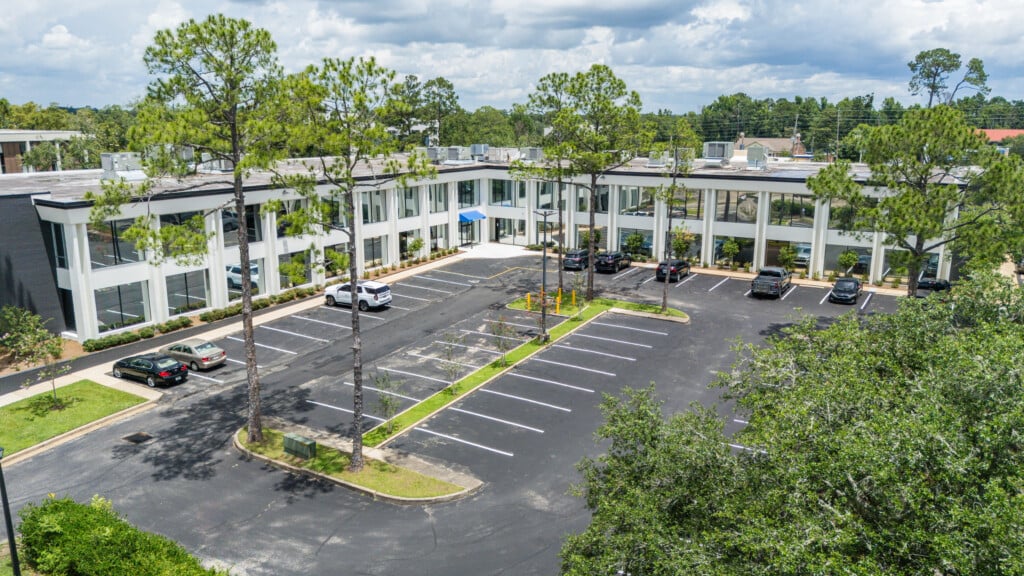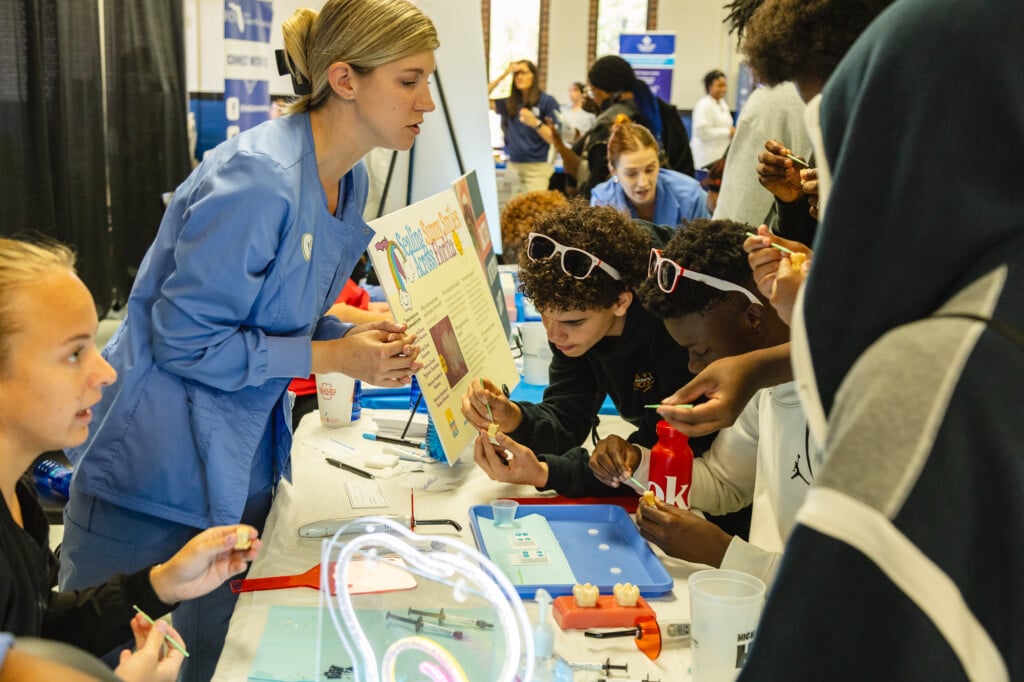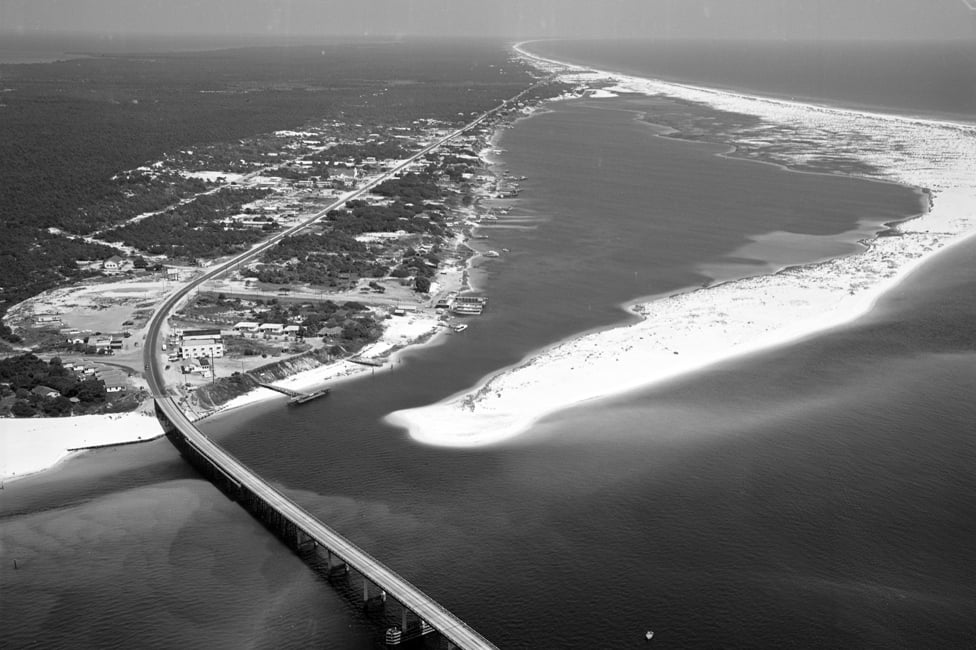Revivifying Rail
Tallahassee officials believe the time to restore passenger service is now

As its whistle blew in big cities to tiny towns, curious Gulf Coast residents rushed to railroad tracks to glimpse the shiny blue and silver Amtrak locomotive.
Some 300 passengers boarded the 2016 Gulf Coast Inspection train from New Orleans to Jacksonville — the first time passengers had traveled the route in more than 10 years. The passenger rail line, Sunset Limited, had been active between 1993 until 2005, when Hurricane Katrina brought it to a halt.
“The turnout in Tallahassee was remarkable,” said Knox Ross, president of the Southern Rail Commission (SRC). “We had thousands of people here. You had the Florida State cheerleaders and FAMU cheerleaders. You had people everywhere.”
This trip marked the first real victory in the mission to restore passenger rail to the Gulf Coast of Mississippi, Louisiana and Alabama. For North Florida, too, this was the first passenger train seen since 2005. It would also be the last.
Grassroots efforts to “get back Amtrak” crop up across North Florida every few years, but none have gained significant traction at the state level. That may soon change.
“Pensacola is really leading the way in this corridor idea,” Ross said. “I think Mayor D.C. Reeves has taken a really proactive role in looking at this as a goal of theirs.”
Reeves attended the U.S. Conference of Mayors in Washington, D.C., in January 2023, just as the Biden administration’s Bipartisan Infrastructure Law went into effect. The bill, which has already allocated more than $280 billion for projects throughout the country, was a major topic of conversation.
“The National Rail Association leadership as well as the CEO of Amtrak were doing a session about the $66 billion — that’s billion with a B — that is going to be invested in passenger rail service,” Ross said. “That is not only to update infrastructure but also to potentially identify new corridors where passenger rail service could either be implemented or restored.”
A large portion of these funds are being allocated to Northeastern states that already have a robust passenger rail network. Improving these existing rail lines is crucial, but the absence of service in North Florida has officials, including Reeves and Leon County Commissioner Rick Minor, wondering what it will take to put the area on the railroad map.
In the months following his trip to the Capitol, Reeves started making calls and forming relationships with members of the SRC, officials at Amtrak and local leaders in every town with a train depot from Pensacola to Tallahassee. Tallahassee Mayor John Daley is extending that effort east to Jacksonville.
Pensacola Mayor D.C. Reeves. Photo courtesy of City of Pensacola
“Now is the time,” Reeves said. “Three years ago would have been too early, and three years from now will be too late. The dollars are there. We’re going to continue to push this as far as we can take it.”
This growing coalition has applied for a $500,000 Corridor Identification and Development (Corridor ID) Grant through the Federal Railroad Administration to investigate the viability of restoring passenger rail to North Florida.
Unlike North Florida, the member states of the SRC (Alabama, Mississippi and Louisiana) have made a concerted effort to restore their portion of the New Orleans-Jacksonville line over the past two decades. A new line from New Orleans to Mobile, Alabama, is set to reopen soon thanks to years of negotiation with rail line owners and others.
Minor believes SRC membership could be the first step toward the restoration of passenger rail across North Florida. Joining the SRC requires the State of Florida to take the first step.
“We’ve been working on this since Katrina and in an organized way for probably 14 years,” Ross said. “What that has really taken is having a champion in a leadership position.”
He noted that in Mississippi, former U.S. Sen. Thad Cochran and U.S. Sen. Roger Wicker have taken the lead.
“I think that the ultimate return of Amtrak to Tallahassee and points west really lies with the Florida Department of Transportation and the State of Florida and what their vision is for passenger rail transportation in the state,” Ross said.
Minor, who has been a long-time advocate, cited the benefits of rail including reduced interstate traffic, additional hurricane evacuation routes, and safer and more affordable transportation for seniors and other vulnerable groups. He also believes it would provide a major boon for the regional tourism economy.
Economic profitability has been an issue. In its final three years of service, Amtrak’s Sunset Limited ridership from its Tallahassee depot declined from 3,778 passengers in fiscal 2003, to 2,488 passengers in fiscal 2005.
Minor believes Sunset Limited would have performed better had it been more reliable and convenient. Only one passenger train traveled the route, and boarding times were often very early in the morning or late at night.
Leon County Commissioner Rick Minor. Photo courtesy of Leon County
“If you take a look at what Louisiana, Mississippi and Alabama are doing right now, they’re working with Amtrak and they’re committed to making that service reliable twice daily now going from New Orleans to Mobile,” Minor said. “We need to piggyback off their efforts, increase reliability and make sure that the departure and arrival times are something that people want.”
The reliability issue has been a product in part of strained relationships with the companies that own the rail lines. Because passenger and freight trains often use the same tracks, concerns about the timeliness of deliveries often take priority over the desire for passenger service.
Still, the profitability question persists. Developing infrastructure to support safe, high-speed, reliable rail transportation requires a significant investment from the state even with the potential infusion of federal dollars.
“I hear that argument sometimes,” Minor said. “People will say, ‘It wasn’t profitable before Hurricane Katrina, and you want to spend X million dollars now. How do you know it’s gonna be profitable this time?’ To which I would say, when it comes to transportation infrastructure, almost nothing is actually directly profitable.”
“There’s the presumption that roads and asphalt, because they’re the standard, aren’t a major subsidy,” Reeves said. “Of course they are. Airports are subsidized significantly at the federal level for infrastructure. Passenger rail absolutely is like every transportation infrastructure that we have. It’s just a matter of deciding what’s valuable to us.”
“I’m optimistic to a fault,” Minor said. “I do believe passenger rail service will come back to North Florida. It’s just a matter of when.”




